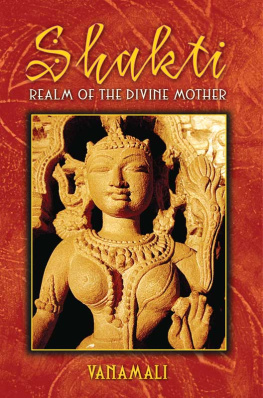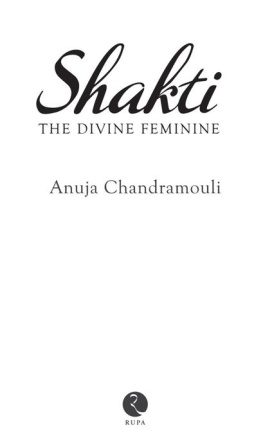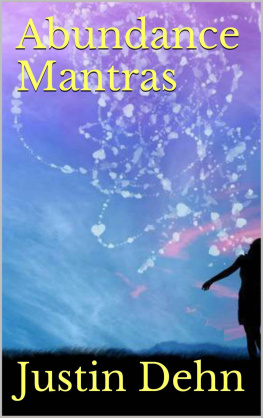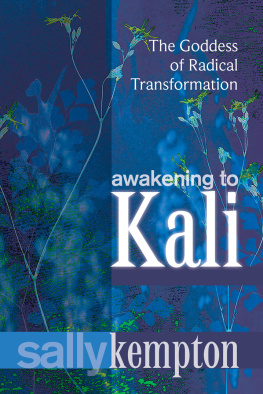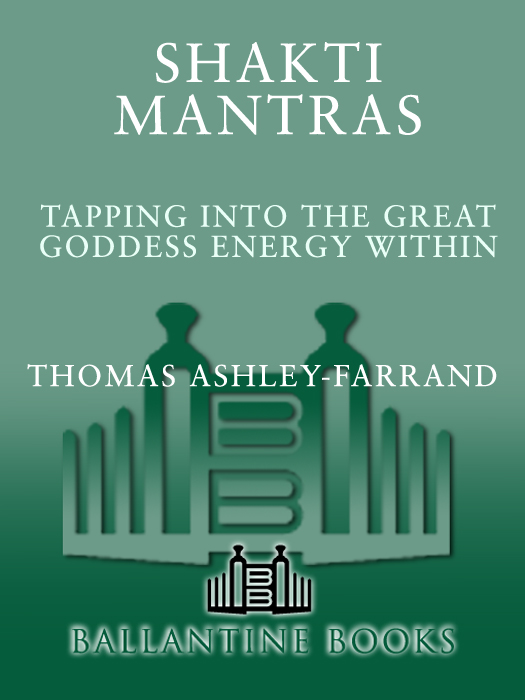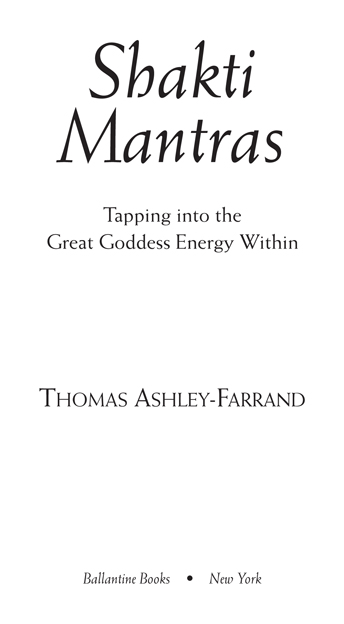Praise for Shakti Mantras
Shakti Mantras by Thomas Ashley-Farrand combines his knowledge as an American Hindu priest, [his] adventures as an experienced spiritual guide, [his] considerable storytelling gifts and the immensely practical, useful knowledge of what chants to use when. In his disarmingly unpretentious and accessible style, Ashley-Farrand draws on an enormous body of knowledge from ancient traditions to art and literature and contemporary science. Shakti Mantras is an appealingly modest treasure, which everyoneman, woman, young, older, novice, adeptcan enjoy. Its as embracing and supportive as a good mother, as entertaining as a teasing sister, and as rewarding as a loving partner.
DOE LANG, PH.D.
Columnist, DBR Media, Inc.
Author of The New Secrets of Charisma
In the face of difficulty, confusion, or imbalance, there are moments when you may just want to lie in your mothers arms. Thomas Ashley-Farrands Shakti Mantras takes you right to the heart of Divine Mothers energy. From that place of nurturing peace that we all have within, things have a way of working themselves out. What a blessing!
IYANLA VANZANT
Author of In the Meantime
and One Day My Soul Just Opened Up
Ashley-Farrand throws light on some important secrets. Shakti Mantras is a comprehensive work presenting an easily readable account of a range of cultures, mantra practices, and spiritual traditions. [It] provides a wealth of information that can lead to a most rewarding life experience. The mantras are presented in an easy way to pronounce for a Westerner.
DR. SARASVATI MOHAN
Director, Sanskrit Academy
A Ballantine Book
Published by The Random House Publishing Group
Copyright 2003 by Thomas Ashley-Farrand
All rights reserved.
Published in the United States by Ballantine Books, an imprint of The Random House Publishing Group, a division of Random House, Inc., New York, and simultaneously in Canada by Random House of Canada Limited, Toronto.
Ballantine and colophon are registered trademarks of Random House, Inc.
www.ballantinebooks.com
Library of Congress Cataloging-in-Publication Data
Ashley-Farrand, Thomas.
Shakti mantras : tapping into the great goddess energy within / Thomas Ashley-Farrand. 1st ed.
p. cm.
Includes bibliographical references (p.).
1. Mantras. 2. Goddesses, Hindu. 3. GoddessesAsia. 4. Shakti (Hindu deity)
5. Self-realizationReligious aspects. I. Title.
BL560 .A835 2003
294.5514dc21 2002034468
eISBN: 978-0-307-49083-4
v3.1
Contents
Om Sarva Mantra Swarupinyei Namaha
Salutations to Her who is the source and essential form of all sacred formulas.
Sri Lalithambika Sahasranama Stotram
She is the Divine Matrix to whom all of nature dumbly calls.
Sri Aurobindo
Kuan Yin is the Mother, the Wife and Daughter of The Logos.
H. P. Blavatsky, The Secret Doctrine
Introduction
Mankind has worshiped great feminine archetypes for as long as we have pursued a mystical relationship with life and the universe. The Great Mother, She Who Loves, She Who Instructs, She Who Protects, She Who Heals are but a few of the names bestowed upon the feminine aspect of the androgynous, human nature that we have revered over the centuries. But for most of recorded religious and spiritual history, a decidedly masculine bias has permeated the Western approach to a supreme deity. God is mostly referred to as He. God the Father is much more often referred to than God the Mother. The great teachers, gurus, and masters have been traditionally represented and described, up until quite recently, as men.
For the most part, until the latter half of the twentieth century, the ancient feminine approaches to divinity were hidden from general public view and teaching. In fact, all the important positions, worldly as well as spiritual, were culturally promulgated to be the province solely of men.
However, with the appearance of the womens movement in the 1960s, a greatly needed adjustment began to take place between masculine and feminine roles in society. In the 1970s and 1980s, a new aspect of the womens movement appeared: interest in woman as goddess. The study of ancient goddess-based religions has flourished since the 1970s and numerous goddess-based books have been written. Since 1990, a flood of books have appeared in both the academic world and the popular press pertaining to something called tantra, an Eastern term for tapping into the omnipresent feminine power throughout the universe. Many are listed in the bibliography.
In the late twentieth century, sightings of Mary increased, drawing much more attention to her via television, new books, and worldwide news coverage. And because of this coverage, more people than ever are aware of the sightings and messages of Mother Mary. In the West, we have also become aware of another powerful and active feminine presence in the spiritual realm. Recognition of the Chinese goddess Kuan Yin has spread quickly in the last thirty years and is now revered by more people in the West than live in all of Japan.
Clearly, something is happening to perceptions about women, power, and divinity.
From an objective point of view, a great balancing has been taking place between the sexes as women have begun to understand their own natural power and to move into what have been traditionally male-dominated positions in society. With more women moving into medicine, law, and corporate management, the gender differences in seminars and boardrooms are striking when compared to just thirty years ago.
Things for men are changing as well. A significant number of men have begun to integrate their feminine sides in search of balance. Over the last two decades, many men have begun to feel and understand the emotional needs of children as part of the role of father, and are nurturing their children in an almost maternal way. On television we see men with tears in their eyes or streaming down their faces. Nothing like this would have been possible in the 1950s through the 1970s.
A concurrent trend was seen as we approached the year 2000. From about 1970 forward, the esoteric spiritual and metaphysical movement in this country grew at an extraordinary rate. Almost overnight, literally thousands of people became interested in completely new categories of spiritual subjects. Most of the Western-based, Eastern-oriented spiritual organizations have taken root only since 1970. The Integral Yoga Institute Centers, the Sivananda Yoga Centers, and the Sikh-oriented 3HO organization all have come into existence since 1970. That the changes in consciousness surrounding feminine power and the growth of Eastern-based spirituality occurred together is no accident. The phenomena are intertwined.
Enter the Age of Aquarius
The Age of Aquarius, starting in 2001, can be rightly called the Age of Power. As we moved into the last two hundred years of the Age of Pisces, from 1900 on, we were entering the influence of the new energy that would become the Aquarian Age. As the change in energy approached, we suddenly experienced a dizzying set of breakthroughs relating to power in some way. It is only in the last two hundred years that we have harnessed the power of electricity that ultimately transformed our society from one that used fire-forged tools and horseshoes to the advent of electric-powered factories and computer-driven industries. While the automobile is commonly credited for sweeping changes in our culture, it is electric power that is the real foundation for everything we take for granted in the way we live today. Without it, we would still be stoking up the coals down at the blacksmiths shop instead of plugging in electric-powered forges. We would still be delivering ice to keep food fresh in iceboxes instead of putting food in the refrigerator. With the harness of electricity we soon had the telegraph with its electrical pulses sent down a wire, followed by the telephone, radio, television, and computers. Our lifestyle and business practices start with electrical power. Significantly, the astrological glyph for the Age of Aquarius is the sign of electrical power: two parallel jagged lines that look like lightning.


